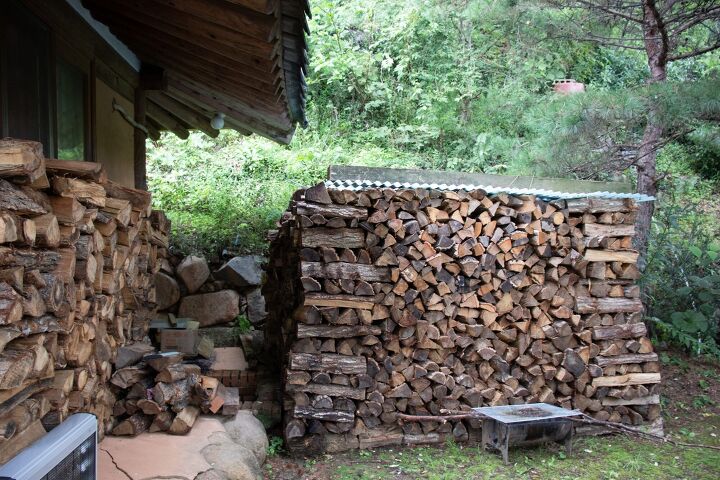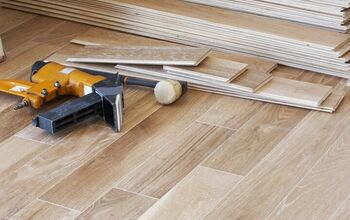How Many Cords Of Wood Do You Need For Winter?

Preparing for the winter is an important part of life for those living in colder climates. If you own a home in a cold region, you probably have one or more fireplaces that get lots of use in the winter months.
But these fireplaces aren’t much help without a consistent supply of firewood. So, as you get ready for winter, you will inevitably find yourself wondering how many cords of wood you will need to get you through the winter.
The cords of wood your home requires for the winter depends on several factors, including the size of your home, the severity of winter, and other forms of heating you have in the home.
Homes that use only wood to heat require significantly more wood than those that don’t. On average, however, a 1,000-square foot-home needs about three full cords of wood to last the winter.
There are lots of variables involved when you try to determine how many cords of wood you need to last the winter. For one, you need to determine if “cord” means a face cord or a full cord. This matters since these two measurements are vastly different.
You also need to think about the home, climate and how you keep your home warm in the cold months. This article will cover all these variables. After you understand them, you will have a better idea of exactly how much you should buy before winter hits your community.
What Is A Cord Of Wood And How Long Will One Cord Last?
A cord is an imperial unit of measurement for wood used primarily in the United States. Cords of wood measure stacks of pre-cut wood in most circumstances.
This means that depending on how the wood is stacked and how thick it is cut, can make an impact on how many pieces of wood there are, and also the volume. But in the end, a cord of wood is the standard bulk measurement of wood.
Full Cords Versus Face Cords: What Is The Difference?
A full cord of wood is what most people mean when they say a cord of wood. Full cords of wood measure four feet high by four feet deep and eight feet long. A face cord has the same height and length as a full cord (four feet by eight feet), but it has a much different depth. Instead of 4 feet in depth, a face cord is only 16 inches deep. Therefore, a face cord has about one third the number of logs as a full cord.
So, to put it simply, a face cord is about one third the size of a full cord. This makes it very important that you specify the difference, as it will result in a very different result depending on what you order.
How Many Pieces Of Firewood Is In One Cord Of Wood?
When you ask the question “how much firewood do I need for the winter?”, you might have to purchase the wood in cords, but when it comes to using the wood, you likely think in pieces of wood. This is why it is very helpful to know how many pieces of wood are in a cord.
After all, if you know you use about 10 pieces of firewood each winter night, you can do some basic math to determine how many cords of wood you need to last you the winter. Numbers vary based on log size and wood type, but one cord of wood should have between 600 and 800 pieces of wood in a full cord. A face cord will have between 200 and 275 pieces.
Factors That Determine How Much Wood You Need For Winter
Size Of Your House
One major factor you need to consider when determining the amount of firewood to purchase for the winter is how large your home is. As a rule, the larger the home, the more wood you will have to purchase.
Imagine a small 300-square-foot cabin – this type of dwelling won’t need much wood in the wood stove to keep warm. A 2,000-square-foot house, however, will need its fireplaces fed constantly to keep the home warm in the coldest months.
Number Of Fire-Burning Receptacles You Have
Similarly to the size of the home, you also need to think about how many fireplaces and wood stoves the home has. Feeding two fireplaces and a wood stove requires basically three times as much wood as just keeping one fireplace lit. So, consider how many fireplaces you will have in use at a time when making your determination.
Quality Of Your Home Insulation
Your home insulation also has an impact on how much firewood you need. After all, it is easy for a fire to create heat, but how well that heat is maintained completely depends on your home’s insulation. Therefore, the better your insulation, the fewer pieces of wood you will need to use to warm your home.
Average Winter Temperatures
Another major variable to think about is the weather itself. Winter means different things in different places. If, for example, you live in a suburb of Washington D.C., you might have a few difficult cold fronts in the winter months, but for the most part, temperatures remain above freezing. Winter is very different in somewhere like Alaska, where it is almost always below freezing, with very little sun. The more severe the winter, the more you will have to rely on firewood for its heat.
Length Of Winter
The length of the winter is also important to consider. The further north you go, the longer the winters tend to be. So, if you have a winter that is almost 6 months long, you will need twice as much firewood as someone living further south with a winter that is closer to three months long. You need to factor in exactly how many months qualify as “winter” and purchase accordingly.
The Other Methods You Use To Heat Your Home
Lastly, you need to think about the other means in which you use to heat your home in the winter. If, for example, you only use wood to keep your home warm in the winter, then you are going to need lots of it.
If you have electric, oil or gas heat, then fireplaces might just offer some supplemental warmth. You might even use fireplaces mostly for their aesthetic purpose. If you are using firewood as a supplemental heat source or just for aesthetics, you can use significantly less. This is especially true since you probably won’t light a fire every night.
Typical Quantity Of Wood Needed To Get Through The Winter
Now that you know all the variables that alter how much wood you need to last the winter, you should know some average usage amounts to help you make your initial purchase. If you plan to use wood as a heat source, and use it with regular frequency, you will need about 3 cords of wood for every 1,000 square feet of home interior.
So, with this an average number, you can start understanding how much firewood you should buy as an initial purchase. If, for example, you have a 2,000-square-foot home, you should think about getting at least 6 cords of wood.
From this base number, factor in your variables accordingly. Are your winters mild? If so, purchase a bit less. If you have poor insulation and rely only on fires for warmth, adjust accordingly. Remember, it is better to have a bit too much rather than too little. Try and get firewood that is rot and insect-repellent. This way, it will last beyond the winter if you don’t use it all up.
Wrapping Up How Many Cords Of Wood You Need For Winter
As you prepare to winterize your home, part of this process is sure to include procuring firewood. Ideally, you will purchase all the firewood you need to last you through the winter. But how much is that?
The answer is not finite, as it will vary based on several factors. These factors include the size of the home, severity and length of the winter, home insulation and what other heat sources you have.
On average, however, you can figure that a 1,000-square-foot home requires about 3 cords to last a standard winter. If you are unsure about how many cords to buy, think about how many pieces of wood you feed a fire per night. Also be sure to remember a cord of wood has between 600 and 800 pieces of wood.
Related Guides:

Tom Gaffey is an expert writer who currently resides in Washington D.C. Tom has a passion for real estate and home improvement writing, as well as travel and lifestyle writing. He lived the last twelve years in Hawaii where he worked closely with luxury resorts and event planners, mastering his knowledge of aesthetics and luxury products. This is where he found his passion for home improvement and a keen interest in DIY projects. Currently, Tom resides in Washington D.C, and also working on his debut fiction novel.
More by Tom Gaffey



























